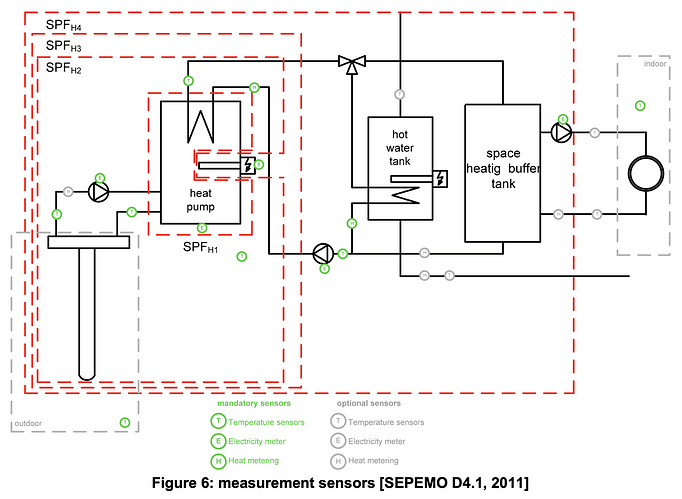After searching for the official SEPEMO publications, I’ve turned up this conference paper which has a bit more detail than I’ve seen elsewhere:
http://sepemo.ehpa.org/uploads/media/D6_9_7_Zottl_HPC4_7.pdf
(I found that link via its Semantic Scholar entry: System boundaries for SPF calculation)
In particular, this diagram from the conference paper includes extra clarity I don’t recall seeing before:
Note the Primary circulation pump is shown outside of H3 (hence also H2) and only included in H4 - along with any Secondary circulation pump(s).
The “[SEPEMO D4.1, 2011]” in the figure caption is a reference to the Deliverable 4.1 report (as the original source for the figure), an output from SEPEMO-Build Work Package 4; here’s the full citation for that report:
SEPEMO D4.1, 2011: “D4.1. guideline for heat pump field measurements for hydronic systems – Version 1.0, The guideline contains information on what to measure in order to calculate SPF and about the required measurement quality”, IEE SEPEMO-Build, February 2011
The “D4.2” citation also looks interesting:
SEPEMO D4.2, 2010: “D4.2. Concept for evaluation of SPF - Version 1.0,
A defined methodology for calculation of the seasonal performance factor and a definition which devices of the system have to be included in this calculation”, deliverable in the Project IEE SEPEMO-Build, June 2010
I have however drawn a blank in finding the full text for the D4.1 & D4.2 reports. It’s clear they were originally published to the WP4 section of the www.sepemo.eu website which no longer exists but is showing up on the Internet Archive here: Work Package 4: Development of monitoring methodology and definitions for seasonal performance - SEPEMO - but looks like they only archived the website structure, not the linked media files ![]()
If anyone happens to have a copy of those reports, or has academic or EHPA contacts that might be able to access them, it would be great to see the full detail of what SEPEMO defined.
